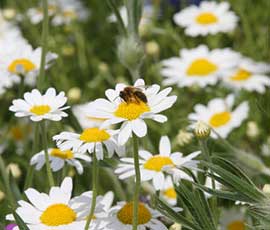Greening: How different farms will be affected

DEFRA has decided against implementing “greening” measures from 2015 through a national certification scheme (NCS) for England.
The scheme would have offered an alternative to the three basic greening measures agreed at European Commission level: maintaining permanent grassland, Ecological Focus Areas (EFAs) and crop diversification.
It would have seen the introduction of additional, equivalent measures that could have offered farmers greater flexibility.
However, DEFRA has concluded that any additional benefits were likely to outweighed by “additional delivery risks”, “complexity for both farmers and enforcement agencies” and open to “disallowance” (EU fines).
English farmers will be relieved that because DEFRA has rejected the idea of introducing a NCS, they will at least be operating on an equal footing as those elsewhere in Europe on greening.
Therefore, from 2015, 30% of farmers’ direct payments will be dependent on fulfilling the three compulsory measures:
Crop diversification – A farmer must grow at least two different crops when his arable land exceeds 10ha and at least three crops when his arable land exceeds 30ha.
The main crop must not cover more than 75% of arable land and the two main crops together must not cover more than 95% of the arable area. In mitigation, DEFRA is proposing to accept that winter and spring varieties will count as different crops to give farmers flexibility to comply with the rules.
Permanent grassland – Overall, the ratio of permanent grassland to eligible land in England must not fall by more than 5%. Remedial action will need to be taken if it does. DEFRA says there will be no conversion or ploughing allowed of designated environmentally sensitive grasslands in Natura 2000 sites and possibly elsewhere.
Ecological Focus Areas (EFAs) – If you have more than 15ha of arable land, you must maintain at least 5% of it as an EFA. To qualify, farmers must introduce on-farm measures from a list of options, with a specific focus on “encouraging pollinators”, such as bees, butterflies and moths.
Measures available include fallow land, field margins, hedges, buffer strips, trees, afforested area, areas with green cover/nitrogen-fixing crops.
DEFRA believes EFAs will deliver “some environmental benefits”, albeit at a “relatively low level”. It says the EFAs could also allow farmers in England to build upon voluntary schemes, such as the Campaign for the Farmed Environment.
How greening will affect four different farm types
A livestock farm of 100ha, with 90ha of permanent grassland and 10ha used for the growing of fodder crops.
Crop diversification: These requirements do not apply to this farm as more than 75% of the eligible agricultural area is permanent grassland and the arable area does not exceed 30ha.
Permanent grassland: This farm will have to contribute to the obligation for the ratio of permanent grassland in England not to decrease by more than 5% compared to the reference ratio in any year.
Ecological Focus Areas (EFAs): The EFA requirements do not apply to this farm as more than 75% of the eligible agricultural area is permanent grassland and the arable area does not exceed 30ha.
A mixed farm of 100ha with 70ha of permanent grassland and 30ha used for the production of arable crops.
Crop diversification: Because the arable land of this farm covers between 10ha and 30ha the farmer will be required to grow two different crops on that arable land. The main crop must not cover more than 75% of the arable land.
Permanent grassland: This farm will have to contribute to the obligation for the ratio of permanent grassland in England not to decrease by more than 5% compared to the reference ratio in any year.
Ecological Focus Areas (EFAs): The EFA requirements apply to this farm as the arable land covers more than 15ha. Five percent of the arable land must be managed as EFA, drawing from the list of EFA options made available in England.
An arable farm of 100ha, with 90ha of land in arable use and 10ha of land in permanent grassland.
Crop diversification: Because the arable land of this farm covers more than 30ha, the farmer will be required to grow three different crops on that arable land. The main crop must not cover more than 75% of the arable land and the two main crops together must not cover more than 95% of the arable land.
Permanent grassland: This farm will have to contribute to the obligation for the ratio of permanent grassland in England not to decrease by more than 5% compared to the reference ratio in any year.
Ecological Focus Area (EFAs): The EFA requirements apply to this farm as the arable land covers more than 15ha. Five percent of the arable land must be managed as EFA, drawing from the list of EFA options made available in England.
A farm of 100ha has 80ha in orchard use, growing top fruit. 20ha are in permanent grassland.
Crop diversification: The crop diversification requirements do not apply to this farm. None of the land is classed as being in arable use.
Permanent grassland: This farm will have to contribute to the obligation for the ratio of permanent grassland in England not to decrease by more than 5% compared to the reference ratio in any year.
Ecological Focus Area (EFAs): The EFA requirements do not apply to this farm as the arable land covers less than 15ha.
Read more about CAP reform on our dedicated page
